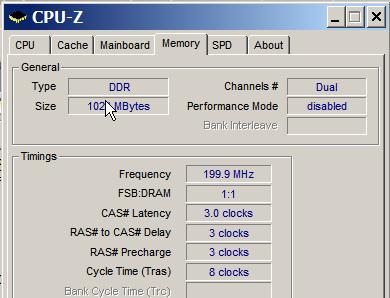

Click the one that says “Performance”, then click the “Memory” heading on the left pane and look at the details in the main pane. The detailed view should give access to Task Manager’s various tabs. Open the Performance tab and check your computer memory on Windows 10.Press “Ctrl + Shift + Esc” to open Task Manager, then click “More details”. Open Task Manager and click “More details”.You just have to drill down into the details. Various upgrades to Windows Task Manager over the years have made it one of the best places to check hardware information and utilization. How to See How Much RAM You Have via Settings You can then decide what method works best for you if you want to check hardware information in the future. Instead, we’re going to show you how to check RAM speed, type, and size using several built-in Windows 10 tools. True, you may get a little more information about power management or temperature, but that’s not often needed and can be found via the command line when it is. Though many turn to third-party software like CPU-Z or HWinfo to check RAM speed or other system details like GPU hardware, it’s not necessary these days. However, with old methods not being as user-friendly, many are left wondering how to check RAM speed on Windows 10, as well find information like its size and type. Whether you’re planning an upgrade, tuning CPU timings, or just curious, it’s handy to know information about your RAM. 6 How to Check RAM Type, Speed, and Size via PowerShell.

5 How to Check RAM Speed, Type, and Size in Command Prompt.4 How to Check RAM Speed, Size, and Type in Task Manager.3 How to See How Much RAM You Have via System Information.2 How to See How Much RAM You Have via Control Panel.1 How to See How Much RAM You Have via Settings.It may be in an “overclocking” options section, although it isn’t technically overclocking. This option may be right on the main settings screen, or it may be buried in an advanced screen about your RAM. Poke around in the BIOS and look for an option named “XMP”. If you’re not sure what the appropriate key is for your computer, check your computer’s–or your motherboard’s–documentation. The key may be displayed on your computer’s screen during the boot-up process. Restart your computer and press the appropriate key at the start of the boot process–often “Esc”, “Delete”, “F2”, or “F10”. To enable XMP, you’ll need to head into your computer’s BIOS. If you built your own PC and never enabled XMP, there’s a good chance your RAM timings are slower than you expect them to be. Compare the timings you see here to the timings your RAM is advertised to run at. Download CPU-Z, click over to the Memory tab, and you’ll see what timings your RAM is configured to run at. You can check your RAM timings from within Windows.


 0 kommentar(er)
0 kommentar(er)
